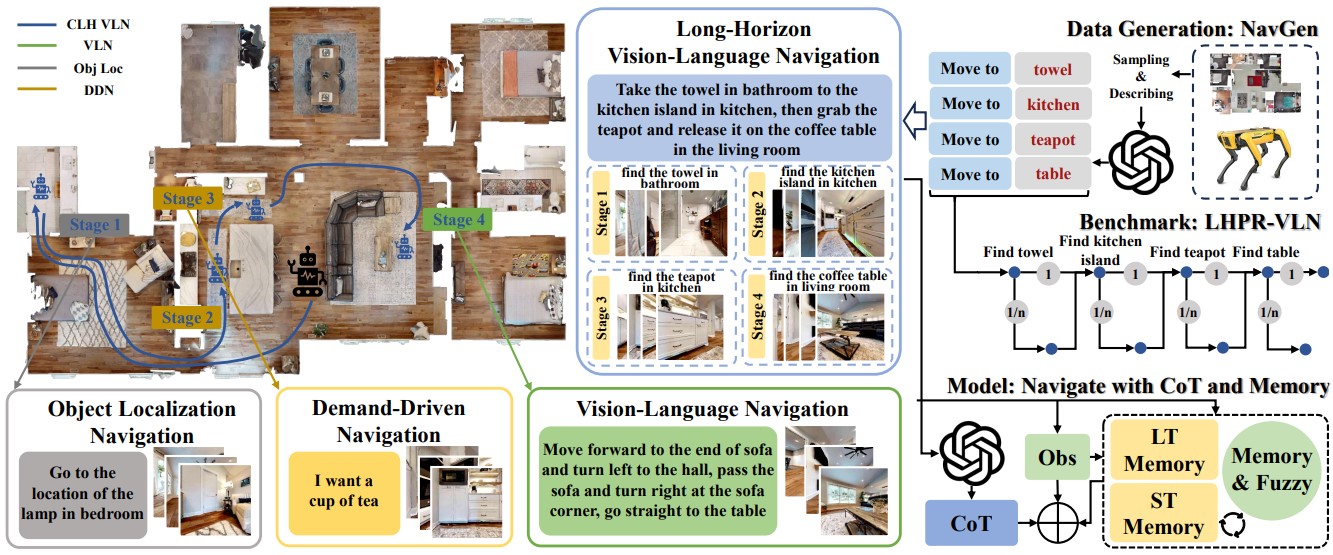Abstract
Existing Vision-Language Navigation (VLN) methods primarily focus on single-stage navigation, limiting their effectiveness in multi-stage and long-horizon tasks within complex and dynamic environments. To address these limitations, we propose a novel VLN task, named Long-Horizon Vision-Language Navigation (LH-VLN), which emphasizes long-term planning and decision consistency across consecutive subtasks. Furthermore, to support LH-VLN, we develop an automated data generation platform NavGen, which constructs datasets with complex task structures and improves data utility through a bidirectional, multi-granularity generation approach. To accurately evaluate complex tasks, we construct the Long-Horizon Planning and Reasoning in VLN (LHPR-VLN) benchmark consisting of 3,260 tasks with an average of 150 task steps, serving as the first dataset specifically designed for the long-horizon vision-language navigation task. Furthermore, we propose Independent Success Rate (ISR), Conditional Success Rate (CSR), and CSR weight by Ground Truth (CGT) metrics, to provide fine-grained assessments of task completion. To improve model adaptability in complex tasks, we propose a novel Multi-Granularity Dynamic Memory (MGDM) module that integrates short-term memory blurring with long-term memory retrieval to enable flexible navigation in dynamic environments. Our platform, benchmark and method supply LH-VLN with a robust data generation pipeline, comprehensive model evaluation dataset, reasonable metrics, and a novel VLN model, establishing a foundational framework for advancing LH-VLN.
Framework
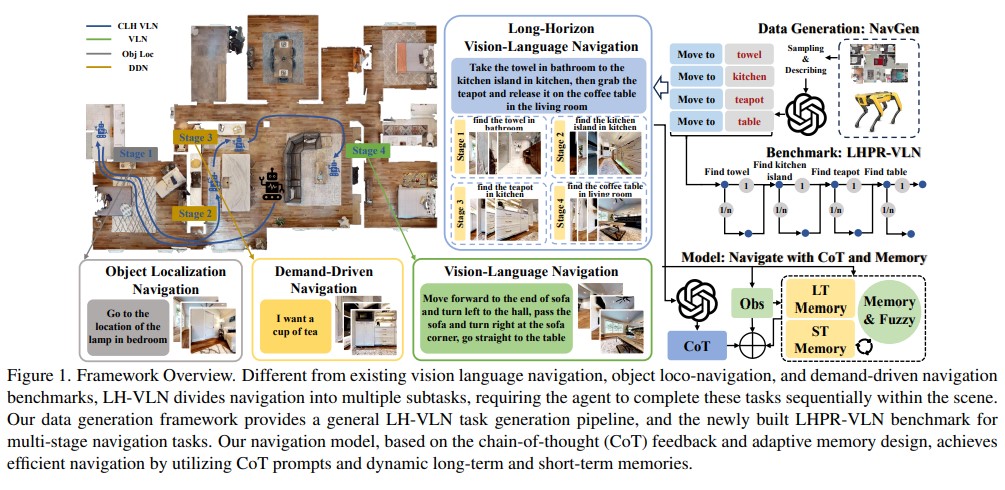
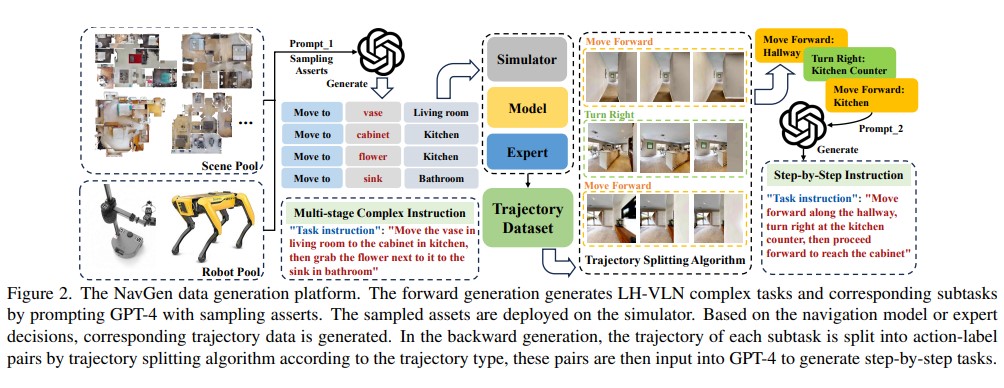

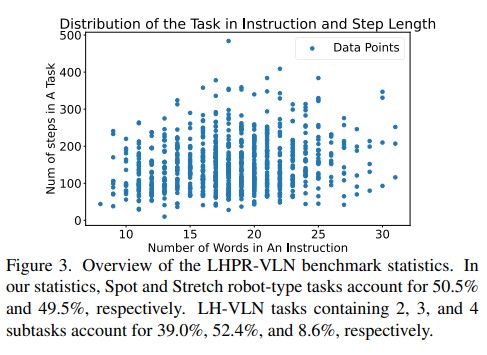
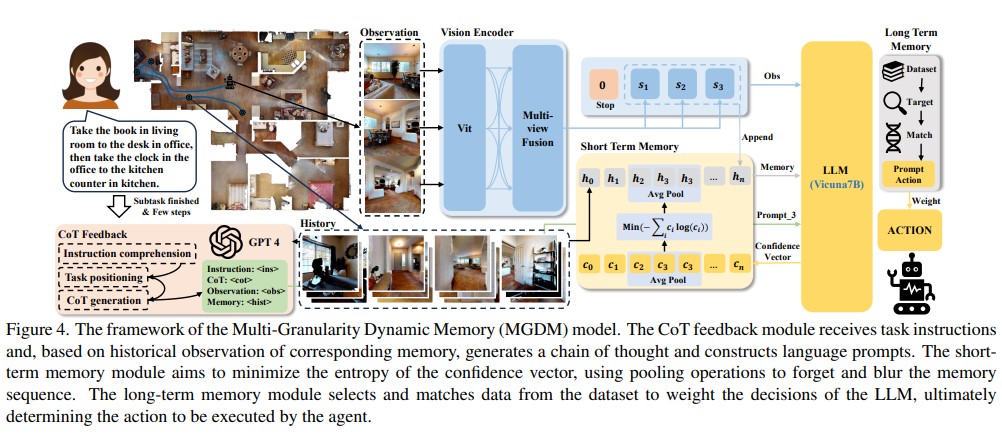
Experiment

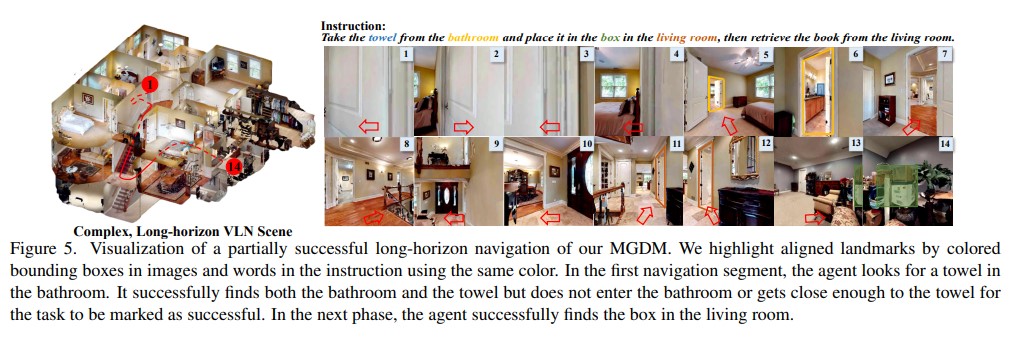


Conclusion
We address the challenges of long-horizon vision-language navigation (LH-VLN) from three aspects: platform, benchmark, and method. Specifically, we develop an automated data generation platform NavGen, which constructs datasets with complex task structures and improves data utility. We also construct the LHPR-VLN benchmark, which provides three new metrics for detailed, sub-task-level evaluation. Additionally, we present the MGDM model, designed to enhance model adaptability in dynamic settings through combined short-term and long-term memory mechanisms, achieving outstanding performance on the LH-VLN task.

